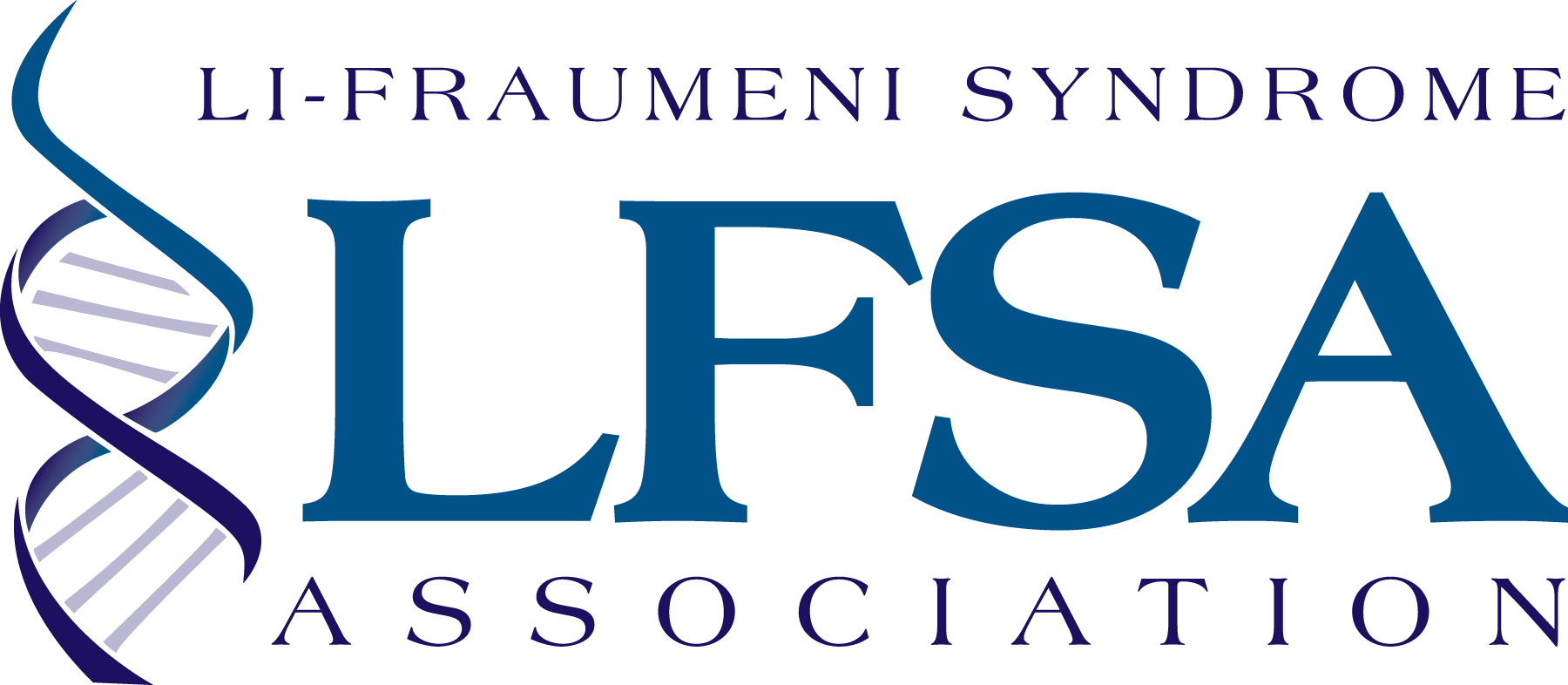Diagnosis
Li-Fraumeni syndrome is diagnosed based on clinical criteria and/or genetic testing for the mutation in the TP53 gene. Genetic testing is typically considered with the below delineated criteria.
Clinical Testing (Clinical Screening & Genetic Testing)
The potential of genetic testing (and the implications of the results) should always involve discussions with a genetic counselor, medical providers, and family.
As delineated by the American Society of Clinical Oncology, the below criteria can be used in determining if genetic testing should be considered:
Classic LFS is diagnosed when a person has all of the following criteria:
- A sarcoma diagnosed before age 45
- A first-degree relative, meaning a parent, sibling or child, with any cancer before age 45
- A first-degree relative or second-degree relative, meaning a grandparent, aunt/uncle, niece/nephew, or grandchild, with any cancer before age 45 or a sarcoma at any age
Chompret Criteria for Clinical Diagnosis of Li-Fraumeni Syndrome has been proposed recently to identify affected families beyond the classic criteria listed above. A diagnosis of LFS and performing TP53 gene mutation testing is considered for anyone with a personal and family history that meets 1 of the following 3 criteria:
Criterion 1
- A tumor belonging to the LFS tumor spectrum, before the age of 46. This means any of the following diseases: soft-tissue sarcoma, osteosarcoma, pre-menopausal breast cancer, brain tumor, adrenal cortical carcinoma, leukemia, or lung cancer, and
- At least 1 first-degree or second-degree family member with an LFS-related tumor, except breast cancer if the individual has breast cancer before the age of 56 or with multiple tumors
Criterion 2
- A person with multiple tumors, except multiple breast tumors, 2 of which belong to the LFS tumor spectrum and the first of which occurred before age 46
Criterion 3
- A person who is diagnosed with adrenocortical carcinoma or a tumor in the choroid plexus, a membrane surrounding the brain, regardless of family history.
Other risk factors to consider, specific to breast cancer:
- A woman who has a personal history of breast cancer at a younger age and does not have an identifiable mutation in breast cancer genes 1 or 2, called BRCA1 or BRCA2, may have a TP53 mutation.
- A woman who is diagnosed with breast cancer before age 30 and is not found to have a BRCA mutation has an estimated 4% to 8% likelihood of having a TP53 mutation.
- Women with breast cancer diagnosed between ages 30 and 39 may also have a small increased risk of having a TP53 mutation.
- In younger woman with breast cancer, a TP53 mutation may also occur with any of the following features: a family history of cancer, especially LFS-related cancers, a personal history of a breast tumor that is positive for estrogen (ER), progesterone (PR), and HER2/neu markers, also known as “triple-positive” breast cancer, and a personal history of an additional LFS-related cancer.

